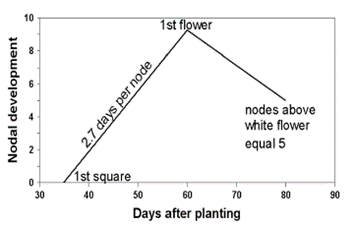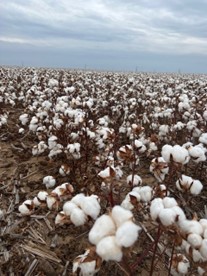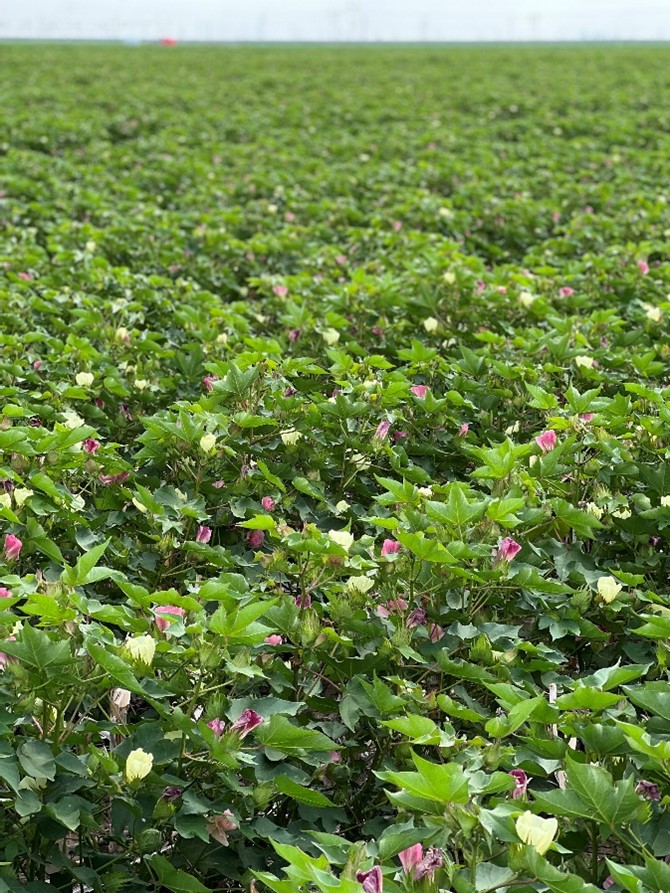Cotton Growth and Development in the Texas Panhandle
Emily T. Brorman1 and Dr. Craig W. Bednarz1,2
1West Texas A&M University Department of Agricultural Sciences
2Texas A&M AgriLife
As water availability continues to be an obstacle in the Texas Panhandle, adjustments toward more drought tolerant crops are essential. Cotton has become a favorable crop because of its capability to be more productive in drought conditions compared to other major field crops in the area. Having a comprehensive understanding of crop growth and development is foundational to effective crop production. Accurately staging growth and development is beneficial for producers to have efficient crop management practices.
Indeterminate vs Determinant:
Cotton is an indeterminate crop meaning the plant grows vegetatively while simultaneously developing reproductive structures. Conversely, determinate crops such as wheat or corn have a defined transition from a vegetative state to a reproductive state. The unique growth habit of cotton is well defined but the transitions between growth stages are not always straightforward. The main axis of the plant will continue to grow as vegetative (monopodia), or reproductive (sympodia) limbs begin to differentiate from the plant. Additionally, fruit development occurs with a leaf population that is consistently aging. After the first flower blooms, vegetative production should decrease as the plant diverts resources to support reproductive structures.
Target Development Curve:
The current industry standard for monitoring cotton growth and development is illustrated by the Target Development Curve (TDC) in the COTMAN Crop Management System developed by the University of Arkansas in the early 1990’s (Figure 1). The TDC illustrates the progression from 1) first flower at 35 Days After Planting (DAP), 2) vertical nodal development at a rate of 2.7 days per node, 3) first flower at 60 DAP at a peak of 9.25 nodes, and 4) the decent to physiological cutout at Nodes Above White Flower (NAWF) = 5. The ascent from first square to first flower is appraised by monitoring main stem nodal development and gives a quantitative measure of vertical nodal development. As the plant begins to flower, nodes above white flower counts (NAWF) can be recorded to monitor first flower to cutout at NAWF 5.

Our Goal:
While the TDC has remained the standard for monitoring cotton progression to maturity, this is representative of a normal non-stressed cotton crop and may not be accurate for cultivars under stress. We face many obstacles in the Texas Panhandle such as being thermally limited and our semi-arid climate. The primary objective of our study is to determine whether cotton maturity patterns differ from the industry standard and if so, define better target values to recalibrate the TDC. Preliminary analyses suggest that we could recommend target values that differ from the industry standard, specifically that we will set squares and flower later than what the TDC suggests, and we hope to investigate a more accurate NAWF cutout value. With these findings we hope to create a unique growth curve with better suited target values for growers in the area.

